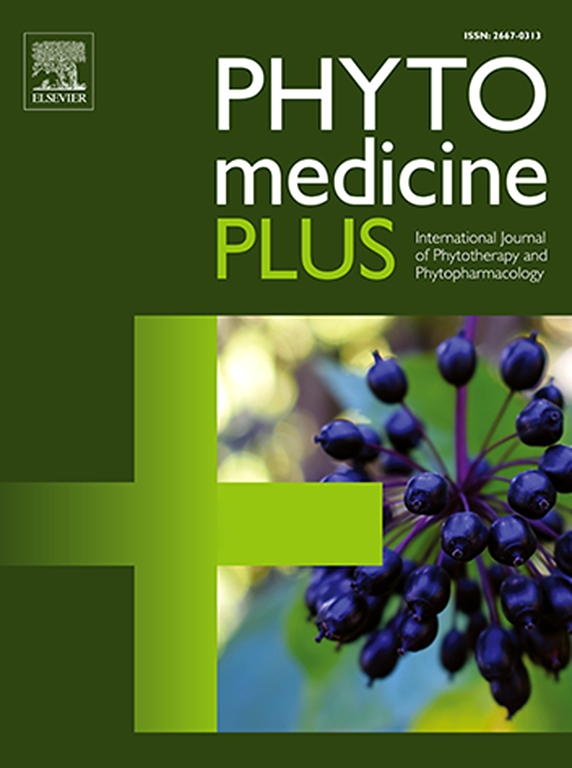Spinach ameliorates dietary oxidized tallow-induced NAFLD by regulating inflammatory cytokines, peroxisome proliferator-activated receptors, and antioxidant systems
Q3 Pharmacology, Toxicology and Pharmaceutics
引用次数: 0
Abstract
Background
Nonalcoholic fatty liver disease (NAFLD) is one of the most prevalent chronic liver disorders globally and is a major clinical concern that is increasing in both industrialized and developing countries.
Purpose
This study aimed to evaluate the ability of Spinacia oleracea dried powder in protecting rabbits from the toxicity caused by oxidized-tallow.
Methods
Oxidized tallow and spinach powder were administered to the rabbits. The phenolic profile of spinach was studied using HPLC-DAD. Investigations were conducted on the liver phospholipid composition, liver-histology analysis, levels of antioxidants, liver-associated inflammatory cytokines, and the serum-lipid profile.
Results
The findings revealed that the primary constituents of the extracts were gallic acid, luteolin-3-glucoside, kaempferol-3-glucoside, and chlorogenic acid. Histological and biochemical examination of the liver revealed greater fat storage in the OT-group than in the control or therapy groups. The OT-treated rabbits exhibited increased levels of hepatic inflammatory cytokines, decreased antioxidant status, and elevated lipid profiles. After consuming spinach, the levels of proinflammatory cytokines (IL-1, IL-4, IL-6, and TNF-α), PPARs, and antioxidants (CATs, SODs, TBARS, GSH-Px, and GSHs) returned to normal.
Conclusion
Dried spinach powder is an excellent dietary source of liver-protective chemicals that ameliorate NAFLD by reducing proinflammatory cytokines and enhancing antioxidant status.

菠菜通过调节炎症细胞因子、过氧化物酶体增殖激活受体和抗氧化系统改善膳食氧化脂肪诱导的NAFLD
非酒精性脂肪性肝病(NAFLD)是全球最普遍的慢性肝脏疾病之一,是一个主要的临床问题,在工业化国家和发展中国家都在增加。目的研究马齿苋干粉对家兔氧化牛脂中毒的保护作用。方法采用氧化牛油和菠菜粉灌胃。采用HPLC-DAD法研究了菠菜的酚类成分。研究包括肝脏磷脂组成、肝脏组织学分析、抗氧化剂水平、肝脏相关炎症细胞因子和血清脂质谱。结果该提取物的主要成分为没食子酸、木犀草素-3-葡萄糖苷、山奈酚-3-葡萄糖苷和绿原酸。肝脏的组织学和生化检查显示,与对照组或治疗组相比,ot组的脂肪储存更多。经ot处理的家兔表现出肝脏炎症细胞因子水平升高,抗氧化状态下降,脂质谱升高。食用菠菜后,促炎细胞因子(IL-1、IL-4、IL-6和TNF-α)、ppar和抗氧化剂(cat、sod、TBARS、GSH-Px和gsh)的水平恢复正常。结论菠菜干粉可通过降低促炎细胞因子和增强抗氧化能力改善NAFLD,是一种极好的肝保护化学物质膳食来源。
本文章由计算机程序翻译,如有差异,请以英文原文为准。
求助全文
约1分钟内获得全文
求助全文
来源期刊

Phytomedicine Plus
Medicine-Complementary and Alternative Medicine
CiteScore
3.70
自引率
0.00%
发文量
178
审稿时长
81 days
期刊介绍:
 求助内容:
求助内容: 应助结果提醒方式:
应助结果提醒方式:


